Enhancing Soft Skills for DevOps Engineers: Essential Non-Technical Skills to Thrive
Collaboration Collusion and Consipiracy
Observation and Context
Welcome to this lesson on Observation and Context—two critical soft skills for DevOps professionals. Just as we monitor system metrics to detect anomalies, we can apply the same principles to human interactions: noticing patterns, identifying deviations, and adapting our approach to foster collaboration and prevent miscommunication.
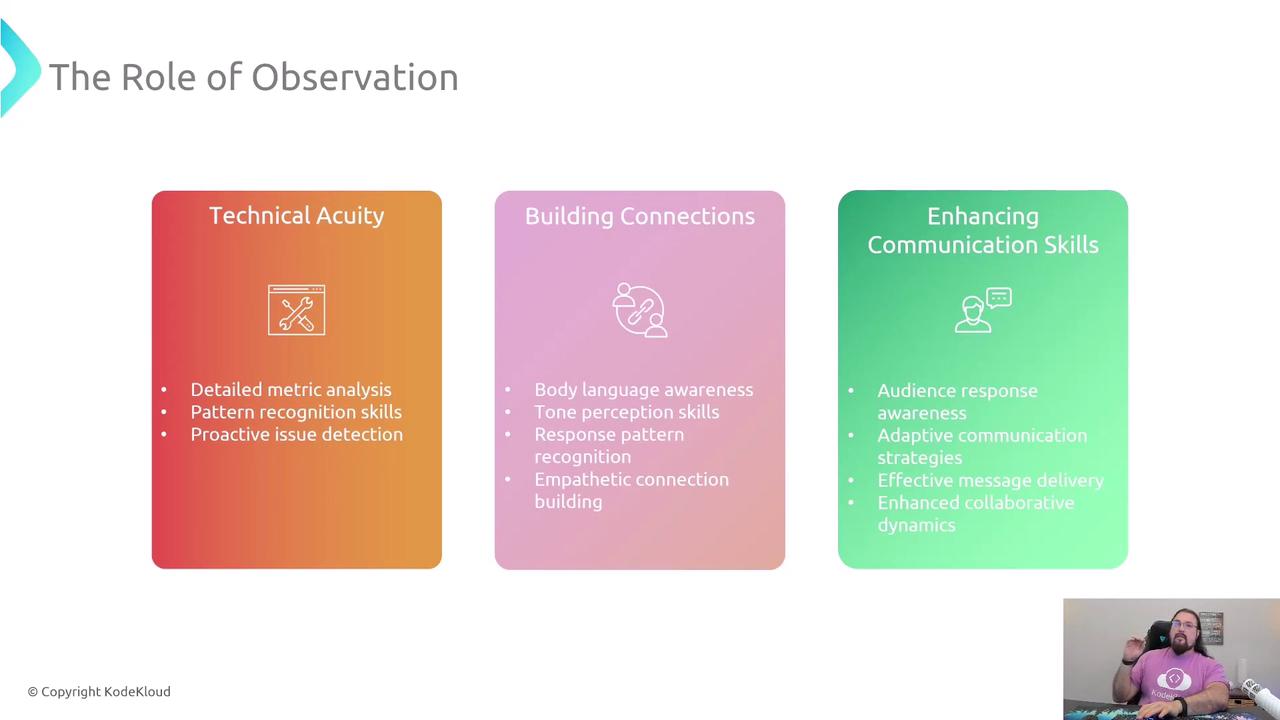
Observation goes beyond words—it’s about tuning into body language, tone, and micro-expressions. When you recognize typical team behavior, you can spot when someone is unusually quiet, overly enthusiastic, or disengaged. These cues often signal opportunities to connect or adjust your message.
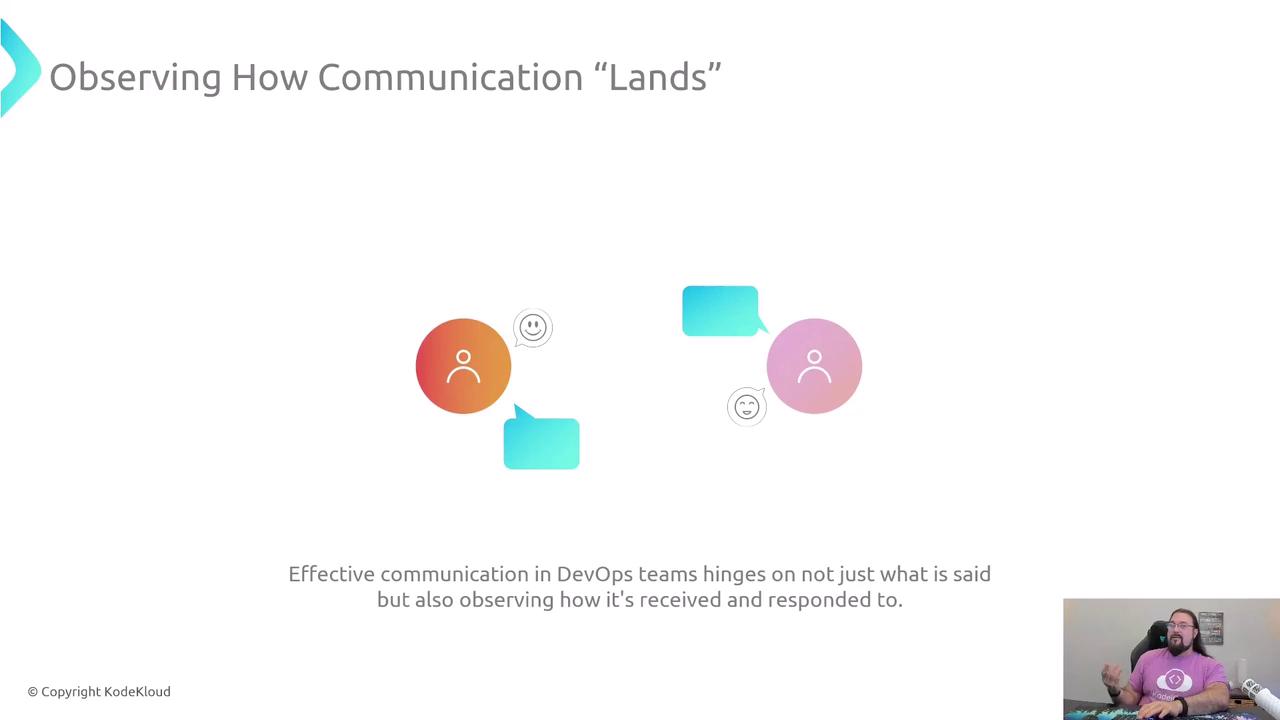
Feedback Loop for Effective Communication
- Observe: Note verbal and nonverbal signals.
- Hypothesize: Interpret what those signals might indicate.
- Experiment: Tweak your content, tone, or delivery.
- Reflect: Assess the response and iterate.
Tip
Consistent observation helps tailor your communication. If a colleague often responds negatively to AWS topics, try discussing general cloud concepts or a different provider to uncover their preferences.
Contextual Factors: Cultural, Historical, Social & Environmental
Understanding context ensures your message lands as intended. The table below summarizes key context types:
| Context Type | Description | Impact on Communication |
|---|---|---|
| Cultural | Norms around personal space, formality, and directness vary across regions and communities. | Adjust tone and phrasing to respect cultural expectations. |
| Historical | Past interactions—positive or challenging—shape current team dynamics. | Reference successful collaborations or address past friction. |
| Social | Presenting to peers differs from addressing leadership or cross-functional groups. | Choose appropriate level of detail and formality. |
| Environmental | Channel and setting (in-person, video call, email) influence how people interpret your message. | Opt for more personal channels for sensitive topics. |
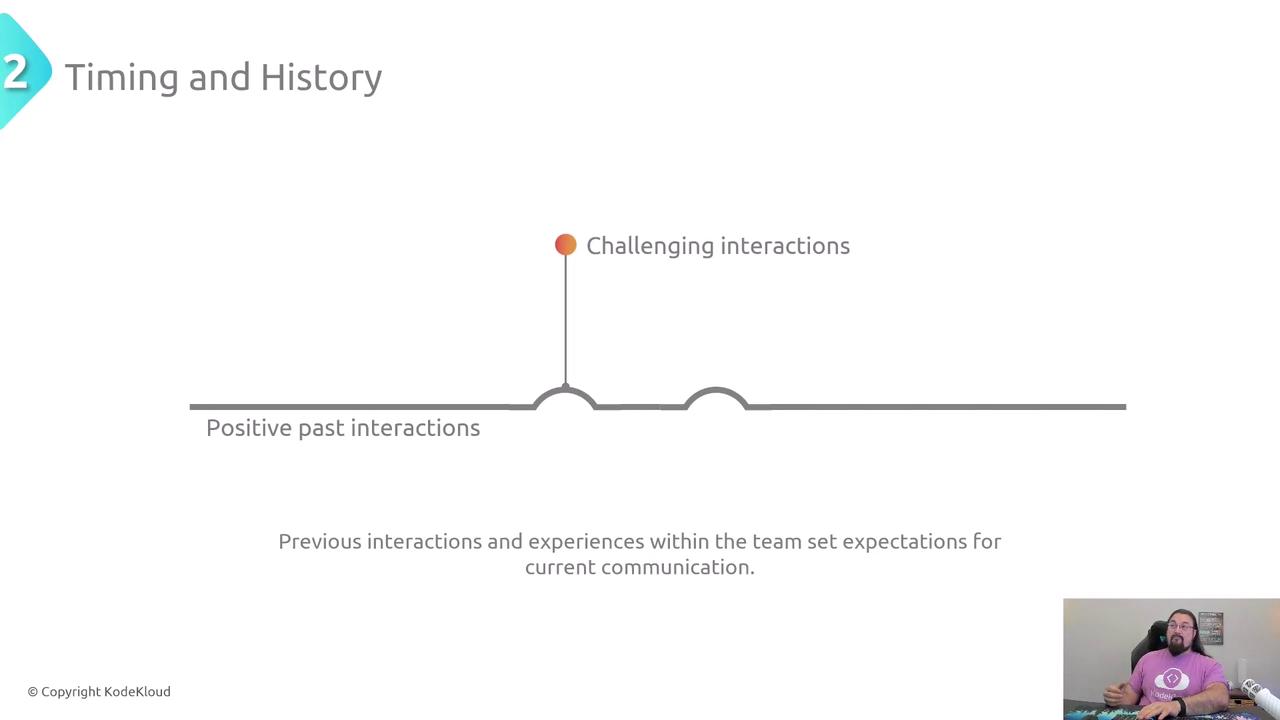
Social vs. Environmental Context
- Social: Peers, leadership, cross-functional teams
- Environmental: Face-to-face, video conferences, chat, email
From virtual meetings with cameras off to hallway discussions, each setting offers different cues and expectations.
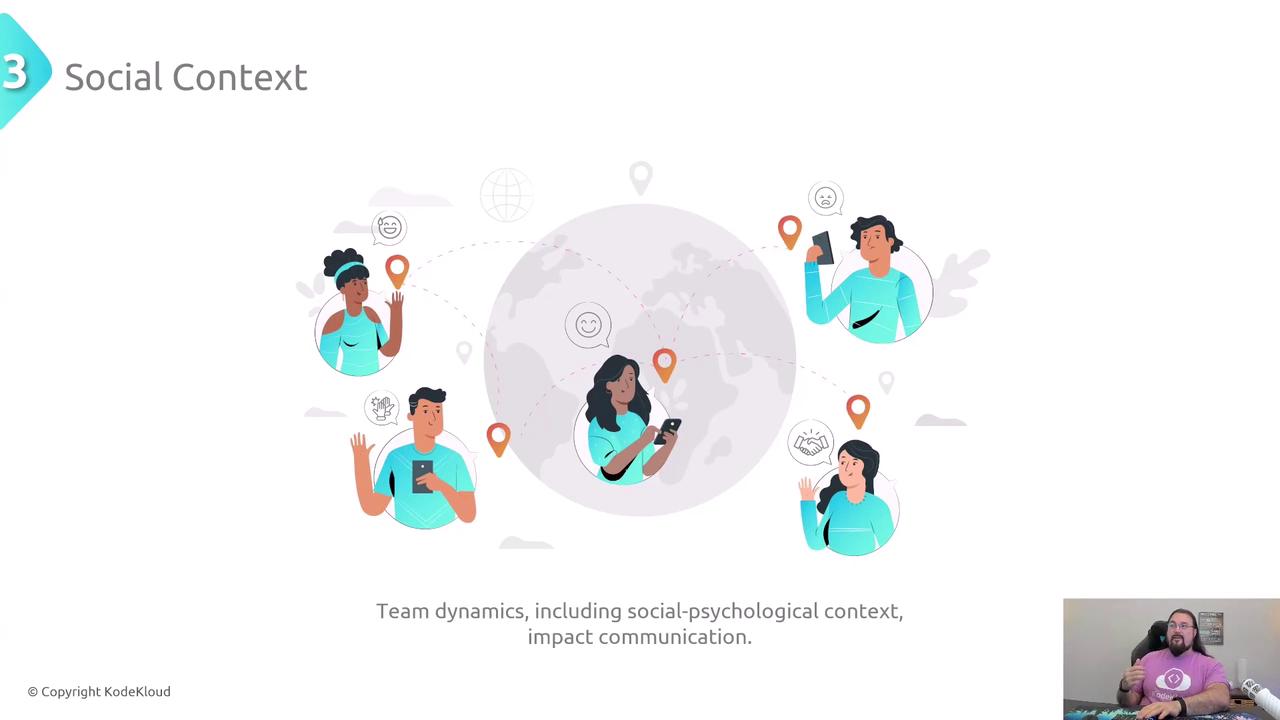
Summary
- Observation combines verbal and nonverbal awareness to gauge reactions.
- Context includes cultural, historical, social, and environmental factors shaping how messages are received.
- By applying a feedback loop and adapting to context, you’ll improve team collaboration and communication efficiency.
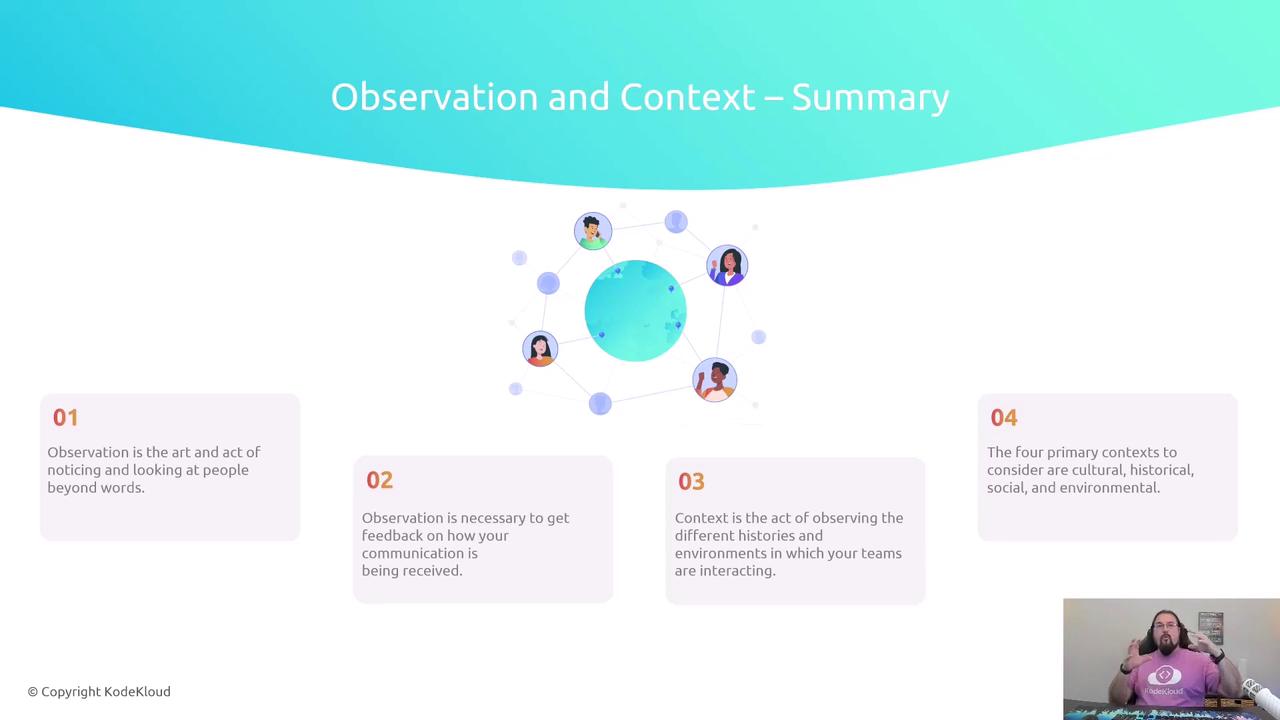
Links and References
Watch Video
Watch video content